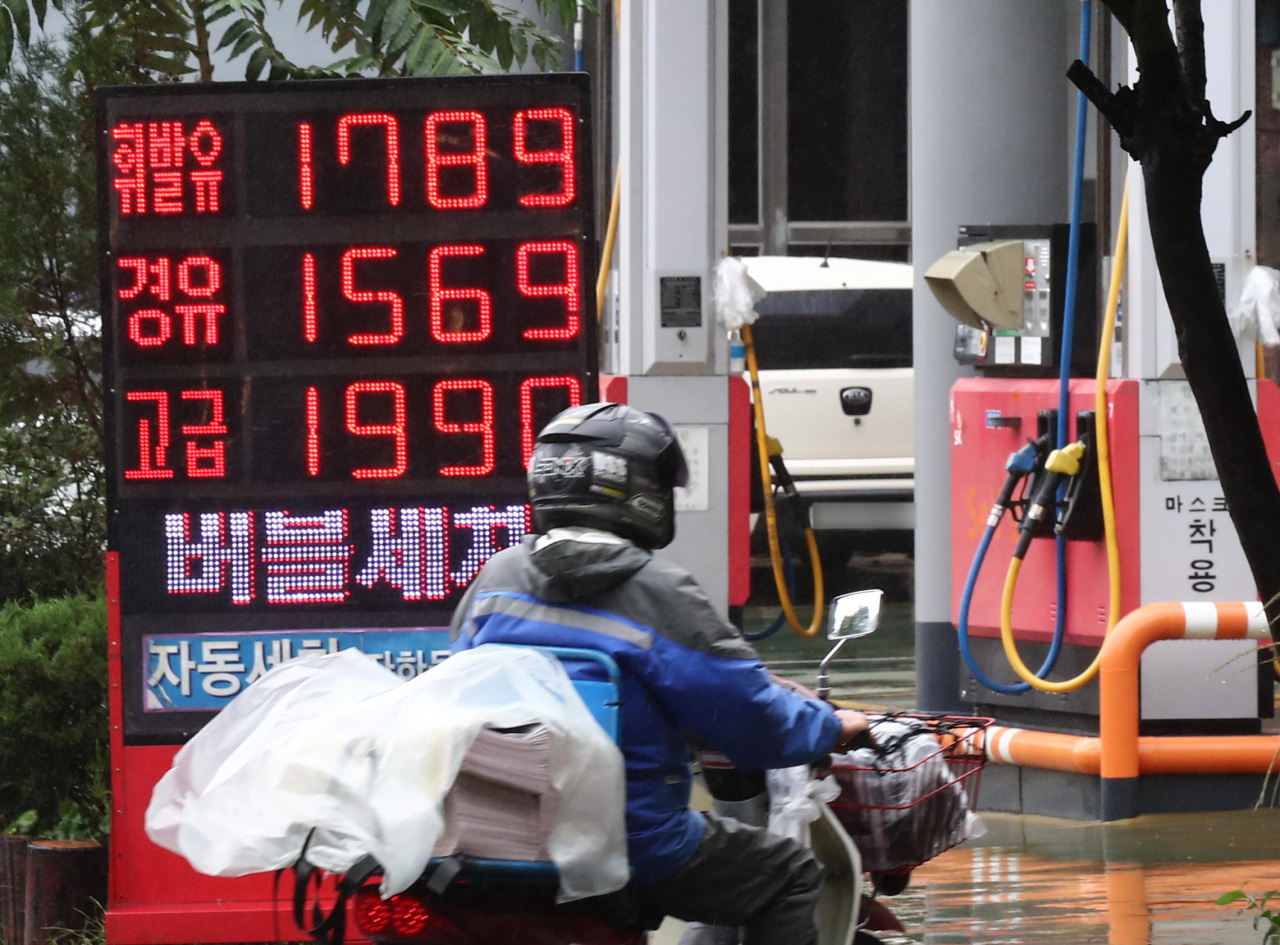SEJONG -- South Korea’s gasoline prices climbed to the highest in almost seven years, in line with a spike in international crude prices over the past month amid steeply rising demand for petroleum worldwide.
The situation, which could worsen further, is expected to pose a tough burden to some manufacturers and households, as long as oil producers choose not to increase output.
According the Korea National Oil Corp., gasoline prices reached 1,695.98 won ($1.42) per liter on Thursday. This marked the highest in 82 months since it recorded 1,697.23 won on Dec. 4, 2014.
The nation’s gasoline prices rose for the 22nd consecutive day after posting 1,642.46 won on Sept. 22.
The figure for Thursday posted a 27.1 percent growth on-year from 1,334.03 won on Oct. 14, 2020. It was also a 35.9 percent increase compared to 1,247.53 won -- the lowest during the pandemic -- on May 15, 2020.
As petroleum prices commonly lead the consumer price growth in Korea, the recent price surge in international crude does not bode well for the local economy.
West Texas Intermediate crude traded over $80 per barrel to reach $80.64 as of Oct. 12, up from $70.45 a month earlier. This was the highest in seven years since it posted $81.12 on Oct. 30, 2014.
WTI prices also recorded a 69.3 percent growth since the first trading session of this year on Jan. 4, when it was $47.62.
Brent crude recorded a 63.2 percent surge from $51.09 per barrel on Jan. 4 to $83.42 on Oct. 12.
Prices of Dubai crude, which take up the largest portion of Korea’s oil imports, climbed 59.2 percent over the corresponding period to also hover over $80 per barrel -- from $50.61 to $80.58.
The US is moving to call on oil producers, including the Organization of the Petroleum Exporting Countries, to increase supply, amid rising demand for oil on the back of a fast global economic rebound, foreign news outlets reported.
OPEC member Saudi Arabia and non-OPEC producer Russia are reportedly not keen on an output increase.
For the local market, there is a dual burden on households and businesses, given the weakening position of the Korean currency against the dollar.
Under mounting uncertainty and worries over global inflationary pressures, investors are opting for the US dollar, one of the major safe havens. And the Korean won has lost ground to the greenback.
Dollar prices continued to rise this year -- posting a 10.1 percent growth from 1,082.5 won on Jan. 4 to 1,192.5 won on Oct. 13.
The cheap Korean currency may be beneficial in terms of price competitiveness of local exporting products.
But a spike in dollar prices will possibly harm purchasing power of local households and businesses, as import prices of foreign-made consumer goods and raw materials, including crude oil, will be hiked, said a research analyst in Seoul.
“Further, when the dollar climbs to over 1,250 won, local exporters should also bear the cost burden from price hikes in imported manufacturing parts,” he said.
A core countermeasure against the high crude and dollar prices could be hikes in the benchmark interest rate by the Bank of Korea, which would prevent further depreciation of the currency and curb import prices.
But analysts warn that hasty effort to normalize interest rates would undermine the economic recovery, pointing out that the coming monetary policy faces a dilemma.
While some developed countries had cut rates to boost the economy amid the COVID-19 situation, Korea had experienced a “real estate fever” over the past two or three years, in which a large portion of households and singles in their 20s or 30s actively took out mortgages to take advantage of record-low loan rates.
Coming rate hikes amid the record-breaking outstanding household debt could hamper the GDP growth by weakening the capacity of households for consumption.
By Kim Yon-se (
kys@heraldcorp.com)








